The "2024 Ethereum Foundation Report" summarizes the foundation's core values, funding strategies, and its support for the long-term development of the Ethereum ecosystem, emphasizing its role in promoting Ethereum innovation and expansion through financial support and teamwork.
Author: Ethereum Foundation
Translation: Blockchain in Plain Language
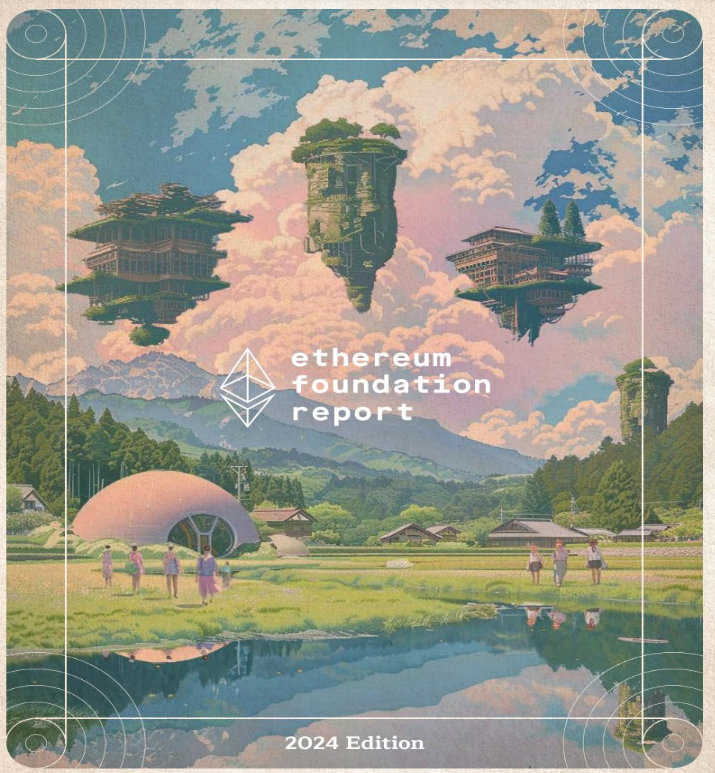
The "2024 Ethereum Foundation Report" is freshly released. This article summarizes the key points of this report. In this article, you will learn about the latest developments of the Ethereum Foundation (EF), recent achievements, as well as the funders, emerging organizations, and latest policies within the Ethereum ecosystem.
1. Ethereum Foundation (EF)
The Ethereum Foundation (EF) is a non-profit organization that supports the Ethereum ecosystem. We are part of a larger community, which consists of numerous organizations, individuals, and companies that collectively fund protocol development, expand the community, and advocate for Ethereum.
We are at the forefront of a new type of organization: one that supports the blockchain ecosystem without controlling it. This model is continuously evolving. Every day, we learn and explore what EF should become to support the long-term development of Ethereum.
The internal organization of the Ethereum Foundation consists of several independent teams. We believe that a structure composed of small autonomous teams is the most effective way to get work done. New teams typically grow organically based on the new needs of the ecosystem, often by forking existing teams.
The teams at the Ethereum Foundation contribute to various areas of the Ethereum ecosystem. Some teams are responsible for building software or exploring the cutting edge of the Ethereum roadmap. Others help cultivate the developer and user ecosystem globally. There are also teams dedicated to education and advocacy, showcasing the utility and potential of Ethereum to the world.
Over the past decade, the Ethereum Foundation has experienced the ups and downs of Ethereum's brief history.
This process has taught us many valuable lessons. Over time, three core principles have gradually formed, guiding the development of the foundation and influencing our decisions.
These are our three core values: long-term thinking, simplicity, and value first.
2. Ethereum Foundation Teams
The Ethereum Foundation has several teams covering a wide range of areas, dedicated to advancing the development of the Ethereum ecosystem. Some teams focus on critical Ethereum infrastructure, while others research and guide the Ethereum roadmap or assist in coordinating ecosystem efforts.
The Ethereum Foundation supports important work in the ecosystem through funding. Funding comes in various forms and amounts, with many Ethereum Foundation teams involved in the approval and evaluation of funding. The Ecosystem Support Program (ESP) regularly reports on funding activities.
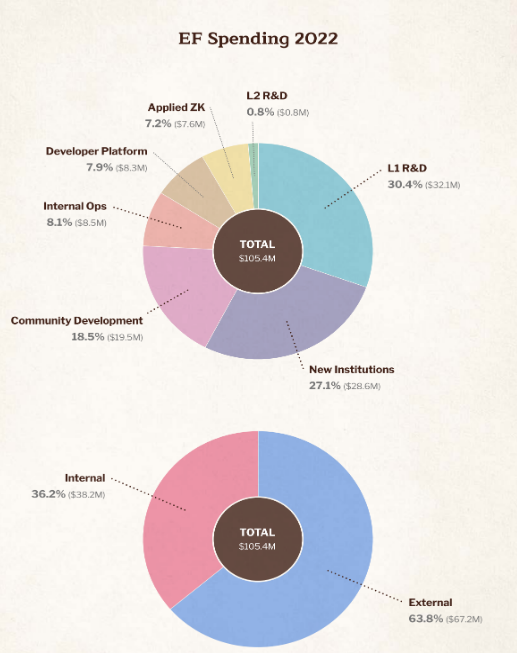
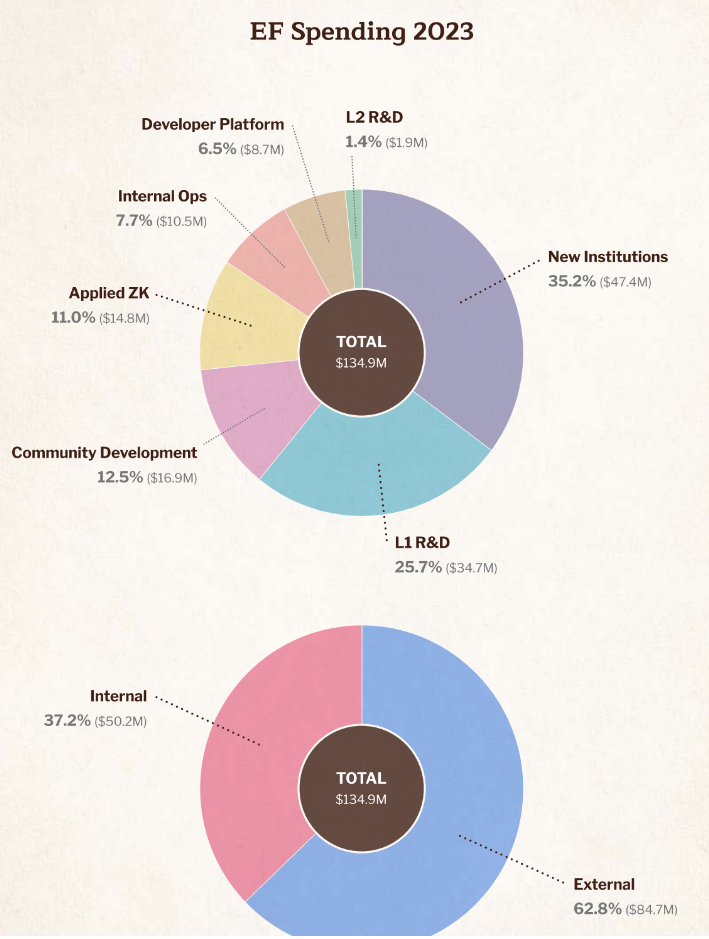
Expenditure Category Description
This category includes all R&D work related to mainnet upgrades, Geth, internal security research, cryptographic development, economic models, and mechanism design, aimed at achieving long-term research on the Ethereum community roadmap, as well as funding for external execution and consensus layer clients. This category also includes many other grants to external parties, covering areas from network stress testing to external research on specialized cryptography.
L1 R&D
This category includes contributions from internal teams to L2 R&D, as well as projects that provide funding to external parties to improve the L2 ecosystem. These grants include educational resources, block explorers, developer tools, security audits, and more, covering multiple supports for external projects.
L2 R&D
This category includes funding provided to privacy and scalability exploration teams (pse.dev), which are involved in projects like MACI, Anon Aadhaar, and TLS Notary. This category also includes many grants covering ZK developer tools, ZK ceremony design UX, and ZK application proof of concept projects.
Application ZK R&D
This category includes all work related to improving the Ethereum developer platform. This includes project support for development libraries such as Solidity, Remix, Ethers.js, and Web3.js, as well as support for the Python ecosystem.
Developer Platform
This category includes various work supporting different segments of the Ethereum community. This work covers interactions with the core protocol community (e.g., supporting the staking community), the Next Billion team, Devcon and Devconnect, as well as support for Ethereum.org and other educational resources. It also includes funding for local and regional Ethereum communities and events around the world.
Community Development
This category includes various daily expenses supporting all teams within the foundation. This includes all costs related to internal and external legal, accounting, and financial services, as well as subscription and service provider fees across the organization, covering data services, operational tools, and technical infrastructure. It also includes all costs related to individual investments in our financial management strategy, as well as salaries for all operational and administrative personnel.
Internal Operations
This category includes funding to support new institutions within the Ethereum ecosystem. In 2022 and 2023, the foundation provided funding to organizations including Nomic Foundation, 0xPARC, and L2BEAT.
Over the past two years, the foundation has been dedicated to nurturing and supporting many emerging organizations that are now driving the Ethereum ecosystem forward, such as Argot Collective, Geodework, L2BEAT, Nomic Foundation, and 0xPARC. We are very proud to work alongside them.
Ethereum is a massive global project encompassing a wide range of diverse work that touches every layer of the Ethereum ecosystem and regions around the world.
Today, many individuals and organizations contribute to this work. However, there is still much work to be done, especially in supporting and maintaining public goods. Relying on a few organizations to accomplish most of the work poses a risk to the ecosystem.
3. Ethereum Foundation Treasury
As of October 31, 2024, the Ethereum Foundation (EF) has a financial reserve of approximately $970.2 million, of which $788.7 million is in cryptocurrency and $181.5 million is in non-crypto assets and investments.
The vast majority (99.45%) of our cryptocurrency assets are held in ETH. These ETH represent 0.26% of the total ETH supply as of October 31, 2024.
We choose to hold most of the treasury's assets in ETH. EF believes in the potential of Ethereum, and our ETH holdings represent this long-term belief.
At the same time, the goal of the EF treasury is to fund important public goods for the Ethereum ecosystem, ensuring that this goal is achieved in the coming years.
To achieve this goal, we must adhere to a conservative treasury management policy, ensuring that there are sufficient resources even after years of market downturns. This requires regularly selling ETH to ensure adequate reserves in the coming years and gradually increasing fiat reserves during bull markets to support expenditures during bear markets.
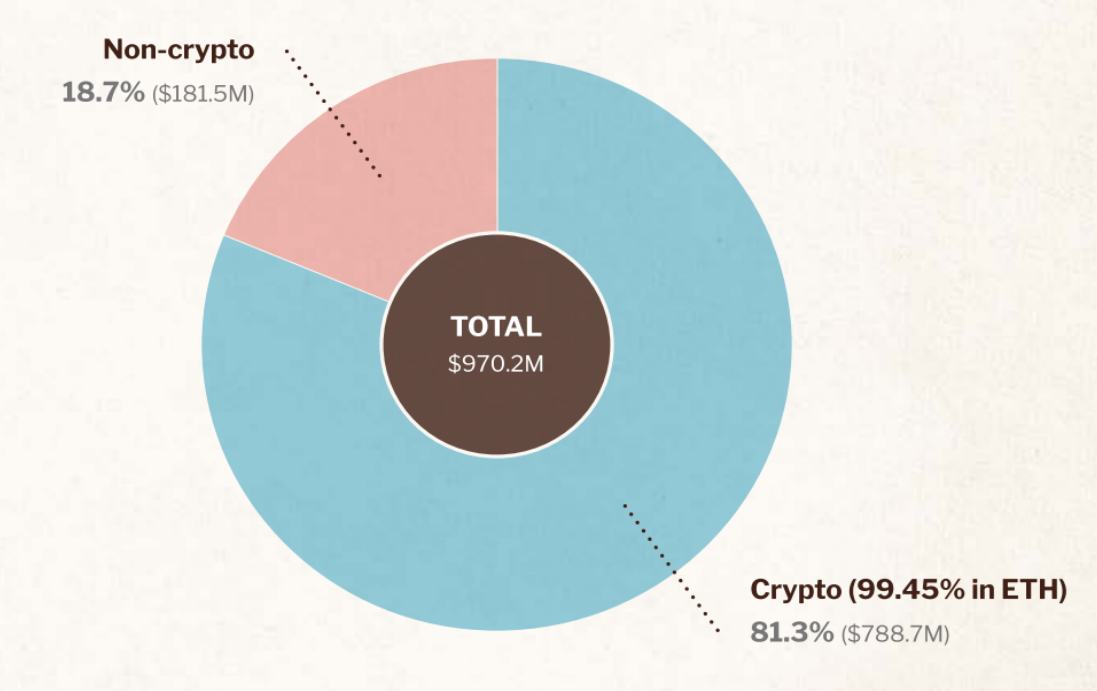
4. Ecosystem Facing Challenges
Ethereum Ecosystem
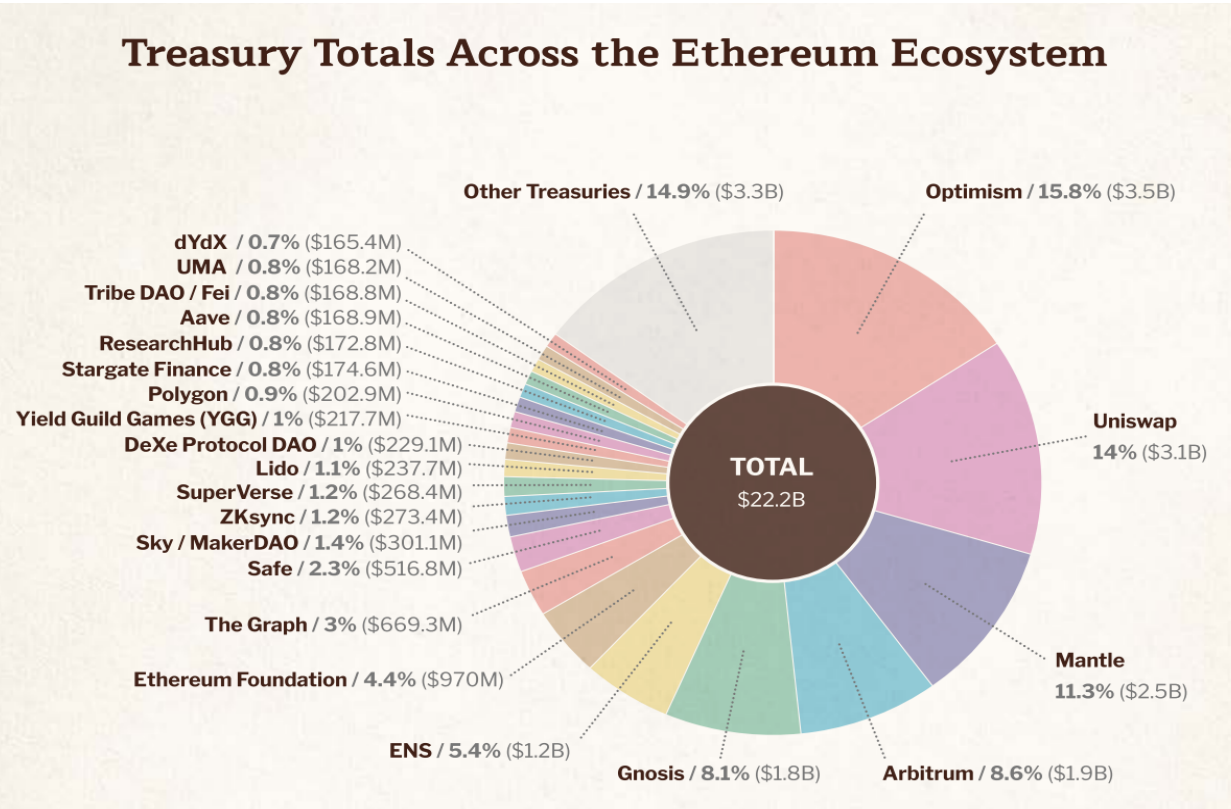
In 2024, the Ethereum ecosystem received billions in funding from the foundation, organizations, and DAO treasuries.
This chart shows the total value in project treasuries, including liquid funds available for projects and funds still under vesting. All non-EF data is sourced from Deep DAO (deepdao.io/organizations), with data as of October 17, 2024.
Most project treasuries are primarily composed of the project's native tokens. This means that the total value of project treasuries is much higher than the total value that can be immediately deployed in fiat. If a project attempts to sell a significant portion of its treasury, it could have a huge impact on the project's token price.
In contrast, this chart illustrates the depth of resources available to the Ethereum ecosystem in the long term. Even a small portion of this capital gradually invested over the next decade will provide significant resources for the growth and maintenance of the Ethereum ecosystem.
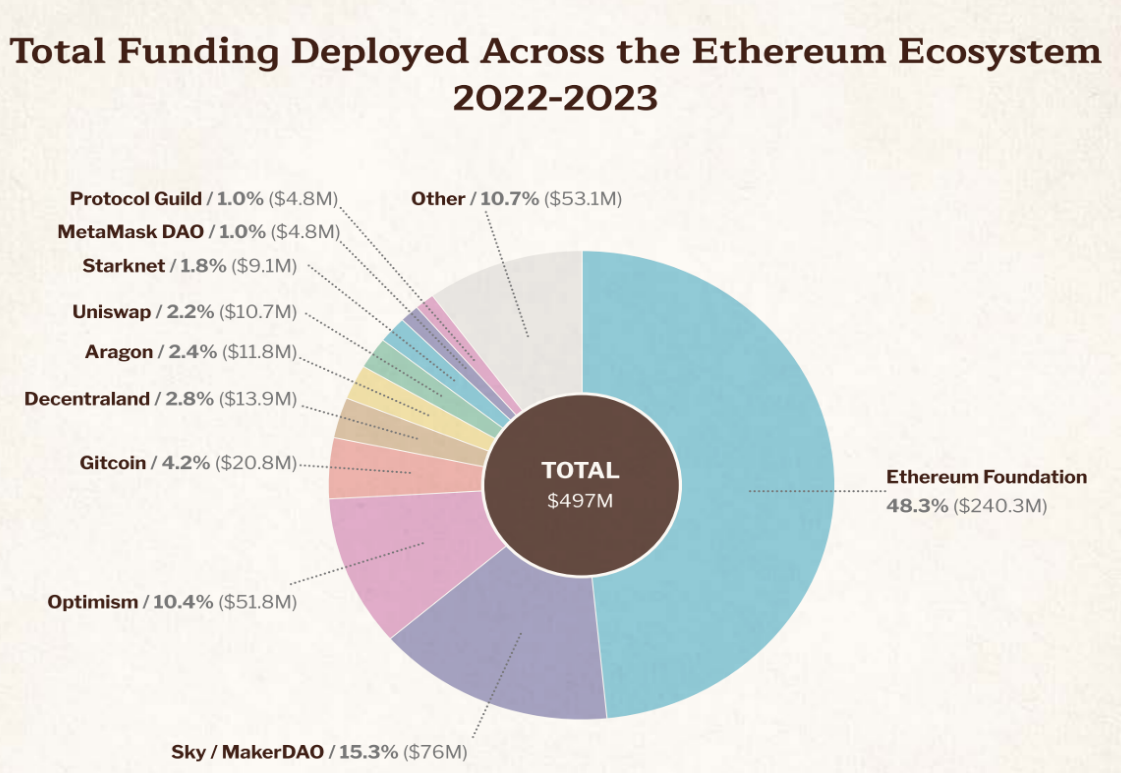
In 2022 and 2023, various organizations within the Ethereum ecosystem collectively invested over $497 million to support various projects in the community.
5. Conclusion
We are proud to see that, just like the R&D process of Ethereum, the funding support for the entire ecosystem has now become a collective effort. This collaboration helps developers within the Ethereum ecosystem discover more innovative pathways.
Additionally, the Ethereum Foundation has established a conflict of interest policy to ensure the integrity of all our work. We hope this will be an important step in enhancing the credibility of the entire ecosystem.
At the Ethereum Foundation, we firmly believe in the concept of the "infinite garden"—an ecosystem composed of shared values, long-term thinking, and distributed growth that can thrive in the long run. As a community, we can ensure that Ethereum is built by everyone and for everyone. Let us continue to build the future together!
Click the link to view the full report: https://ethereum.foundation/report-2024.pdf.
Article link: https://www.hellobtc.com/kp/du/11/5522.html
Source: https://ethereum.foundation/report-2024.pdf
免责声明:本文章仅代表作者个人观点,不代表本平台的立场和观点。本文章仅供信息分享,不构成对任何人的任何投资建议。用户与作者之间的任何争议,与本平台无关。如网页中刊载的文章或图片涉及侵权,请提供相关的权利证明和身份证明发送邮件到support@aicoin.com,本平台相关工作人员将会进行核查。




